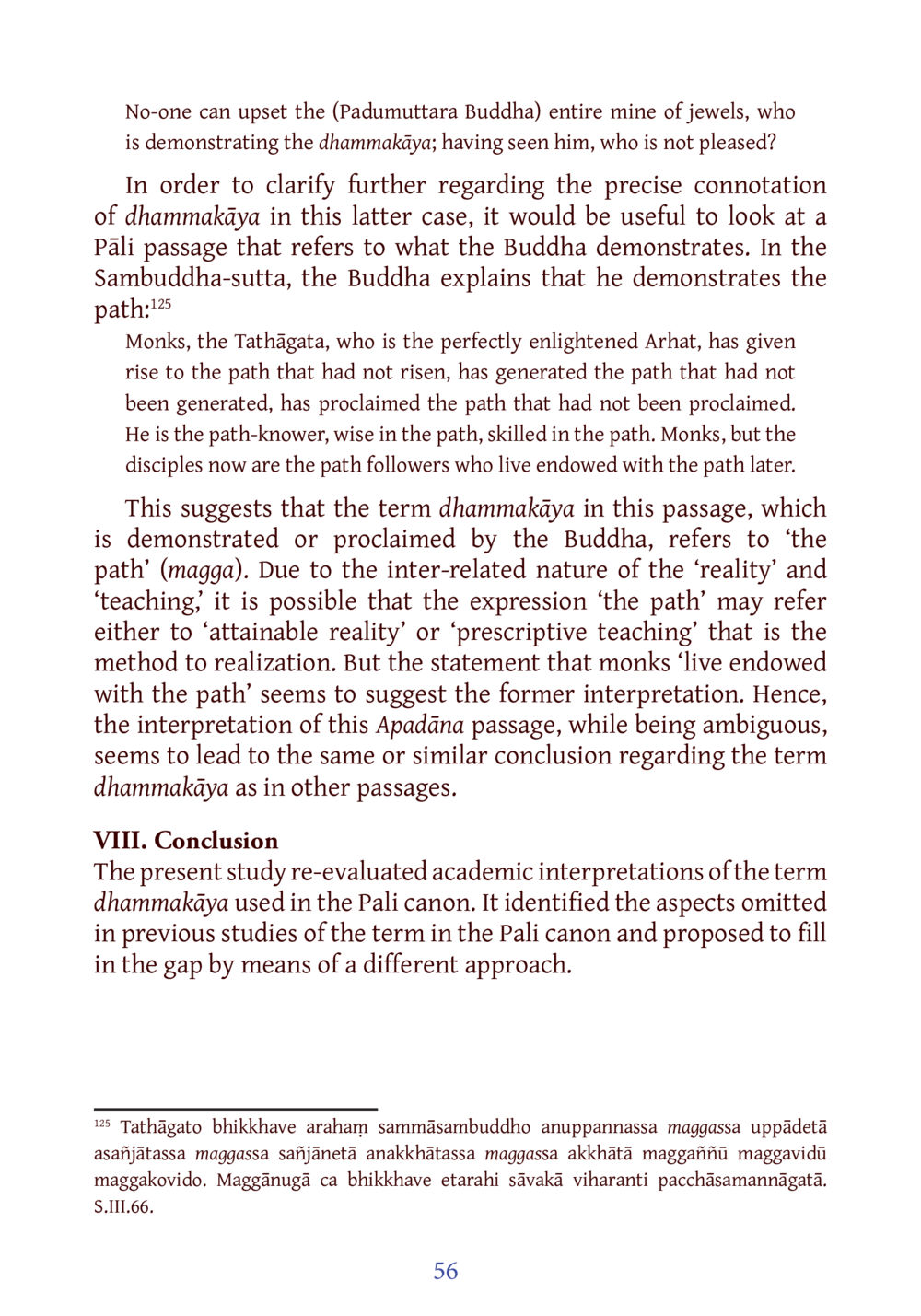Re-evaluating the Concept of Dhammakāya in the Pali Canon : หน้า 77/141
DIRI Journal : หน้า 77/141 An analysis of the term dhammakāya as found in the Pali canon, exploring its meanings and implications in Buddhist teachings.
1 ครั้ง

สรุปเนื้อหา
This study revisits the term dhammakāya in the Pali canon, highlighting its significance in Buddhist teachings. By examining the Sambuddha-sutta, the relationship between 'the path' and dhammakāya is clarified. It argues that the dhammakāya may refer to both an attainable reality and prescriptive teachings, emphasizing the monks' role as path followers. The research aims to address gaps in previous interpretations of dhammakāya, providing insight into its multifaceted implications within Buddhist philosophy. For more information, visit dmc.tv.
หัวข้อประเด็น
-Concept of Dhammakāya
-Academic Interpretations
-Path of the Tathāgata
-Sambuddha-sutta Analysis
-Buddhist Teachings and Reality
ข้อความต้นฉบับในหน้า
No-one can upset the (Padumuttara Buddhu) entire mine of jewels, who is demonstrating the dhammakāya; having seen him, who is not pleased?
In order to clarify further regarding the precise connotation of dhammakāya in this latter case, it would be useful to look at a Pāli passage that refers to what the Buddha demonstrates. In the Sambuddha-sutta, the Buddha explains that he demonstrates the path:125
Monks, the Tathāgata, who is the perfectly enlightened Arhat, has given rise to the path that had not risen, has generated the path that had not been generated, has proclaimed the path that had not been proclaimed. He is the path-knowwer, wise in the path, skilled in the path. Monks, but the disciples now are the path followers who live endowed with the path later.
This suggests that the term dhammakāya in this passage, which is demonstrated or proclaimed by the Buddha, refers to ‘the path’ (magga). Due to the inter-related nature of the ‘reality’ and ‘teaching,’ it is possible that the expression ‘the path’ may refer either to ‘attainable reality’ or ‘prescriptive teaching’ that is the method to realization. But the statement that monks ‘live endowed with the path’ seems to suggest the former interpretation. Hence, the interpretation of this Aḍāna passage, while being ambiguous, seems to lead to the same or similar conclusion regarding the term dhammakāya as in other passages.
VIII. Conclusion
The present study re-evaluated academic interpretations of the term dhammakāya used in the Pali canon. It identified the aspects omitted in previous studies of the term in the Pali canon and proposed to fill in the gap by means of a different approach.
หน้าหนังสือทั้งหมด

1

2

3

4

5

6

7

8

9

10

11

12

13

14

15

16

17

18

19

20

21

22

23

24

25

26

27

28

29

30

31

32

33

34

35

36

37

38

39

40

41

42

43

44

45

46

47

48

49

50

51

52

53

54

55

56

57

58

59

60

61

62

63

64

65

66

67

68

69

70

71

72

73

74

75

76

77

78

79

80

81

82

83

84

85

86

87

88

89

90

91

92

93

94

95

96

97

98

99

100

101

102

103

104

105

106

107

108

109

110

111

112

113

114

115

116

117

118

119

120

121

122

123

124

125

126

127

128

129

130

131

132

133

134

135

136

137

138

139

140

141
หนังสือที่เกี่ยวข้อง
Load More
